
views
X
Trustworthy Source
Mayo Clinic
Educational website from one of the world's leading hospitals
Go to source
Recognizing the Symptoms of Boils
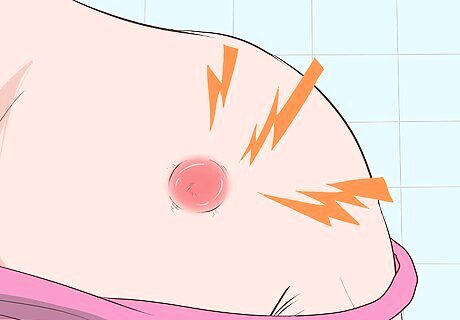
Look for a red, painful bump in your skin. When a boil first begins to develop, the infection will remain fairly deep under the skin. Boils usually start out as a reddish bump about the size of a pea that is painful to the touch. In some cases, the boil may hurt even when you are not touching it. The skin around the bump may appear swollen and inflamed. Boils can appear anywhere on your body, but they are most likely to develop in areas where you experience a lot of sweating and friction. Common places include the face, neck, armpits, thighs, and buttocks.
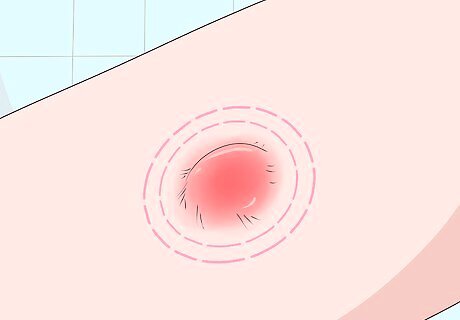
Note whether the bump grows larger in the days after it appears. Keep an eye on the possible boil in the next few days after you first notice it. If it is a boil, it will begin to expand as the abscess under your skin fills with pus. Some boils can grow to around the size of a baseball, but this is uncommon. You can monitor the growth of the boil by putting a pen mark at its edge so you can see if it expands. Alternatively, you can measure it every day. As the boil grows, it will typically become more painful and softer to the touch.
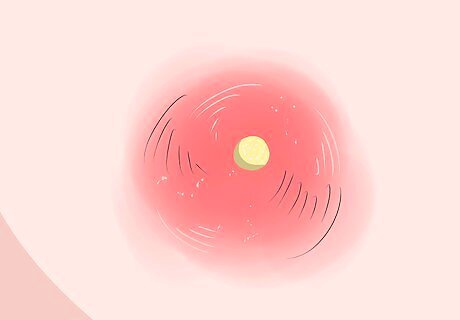
Check for yellowish pus under the skin in the middle of the bump. As the boil grows, look for the formation of a yellow or off-white “tip.” This can happen when the pus inside the boil comes to the surface and becomes visible under your skin. In many cases, the pustule will rupture on its own, allowing the boil to drain and heal. Keep in mind that you may not see the pus if the boil is fresh. Usually, the pus does not become visible until the later stages of the boil. Never attempt to pierce or squeeze the boil to drain the pus. Doing so could cause the infection to spread deeper into your tissues.
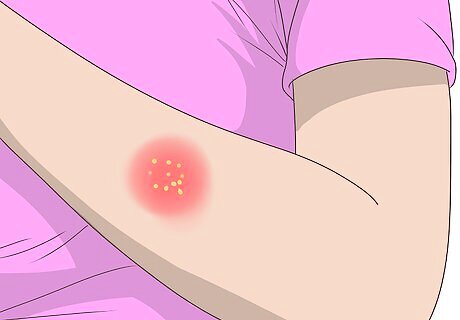
Watch out for more severe symptoms that may indicate a carbuncle. If you notice that you have what appears to be several boils clustered together, you may have a carbuncle. These infections most commonly appear on the shoulders, back of the neck, or thighs. In addition to pain and swelling, look out for symptoms such as fever, chills, and a general feeling of illness. A carbuncle may be as big as 4 inches (10 cm) across. They typically take the form of a large, swollen area with a dense cluster of pustules at the highest point. Carbuncles or severe boils may also cause swelling in your nearby lymph nodes.
Getting a Medical Diagnosis

See your doctor if you have severe or multiple boils. While most small boils heal up on their own, it’s a good idea to see your doctor for further evaluation if you have unusually large or severe boils. You should also get boils that recur or appear in groups checked out. Make an appointment right away if: You have a boil or carbuncle on your face, spine or buttocks. Your boil is very painful or fast-growing. Your boil or carbuncle is accompanied by a fever, chills, or other symptoms of general illness. The boil is larger than 2 inches (5.1 cm) across. Your boil hasn’t healed after 2 weeks of home treatment. The boil healed and then returned. You have any other concerns or are not sure whether the infection is a boil.
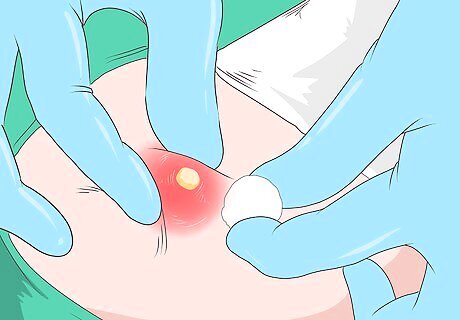
Allow the doctor to run tests if they recommend it. In most cases, your doctor should be able to confirm that you have a boil with a physical exam. If you have frequent or recurring boils, however, they may wish to do further testing to confirm the diagnosis or determine an underlying cause. Let your doctor know if you have a history of recurring boils or any other symptoms that may be causing you concern. Your doctor might take a sample of fluid from the boil and send it to the lab for analysis. This can be useful for determining the best treatment for your boil, especially if it is caused by an antibiotic-resistant form of bacteria. Let your doctor know if you have any other health issues that may be related to your boils. Common risk factors for boils include diabetes, skin conditions such as eczema or acne, a weakened immune system from a recent illness or a medical condition, or recent close contact with someone who has boils or carbuncles.
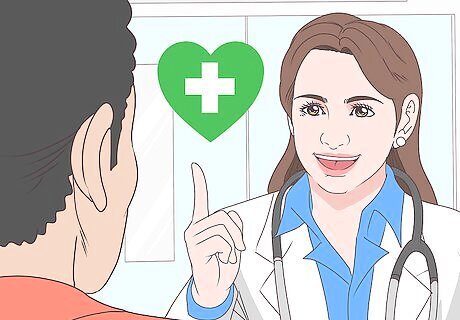
Talk to your doctor about your treatment options. Depending on the severity of your boil, your doctor may recommend home treatment, or they might suggest more aggressive interventions. For example, they might offer to make a small incision and drain the boil in the office, or prescribe an antibiotic to help eliminate the infection. Carefully follow your doctor’s instructions for home care. Always finish any course of prescribed antibiotics unless your doctor instructs you to do otherwise. Your doctor might instruct you to use warm compresses to relieve pain and encourage the boil to rupture. If your doctor drains the boil in the office, you may need to wear dressings over the wound while it heals. Additionally, you may have 1 or 2 stitches over the wound. Follow up with the doctor as directed to make sure the boil is healing properly.



















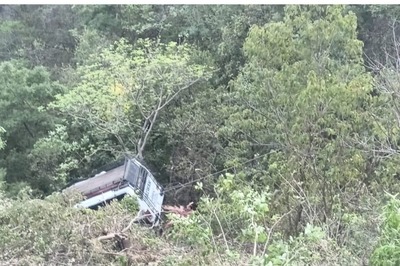
Comments
0 comment